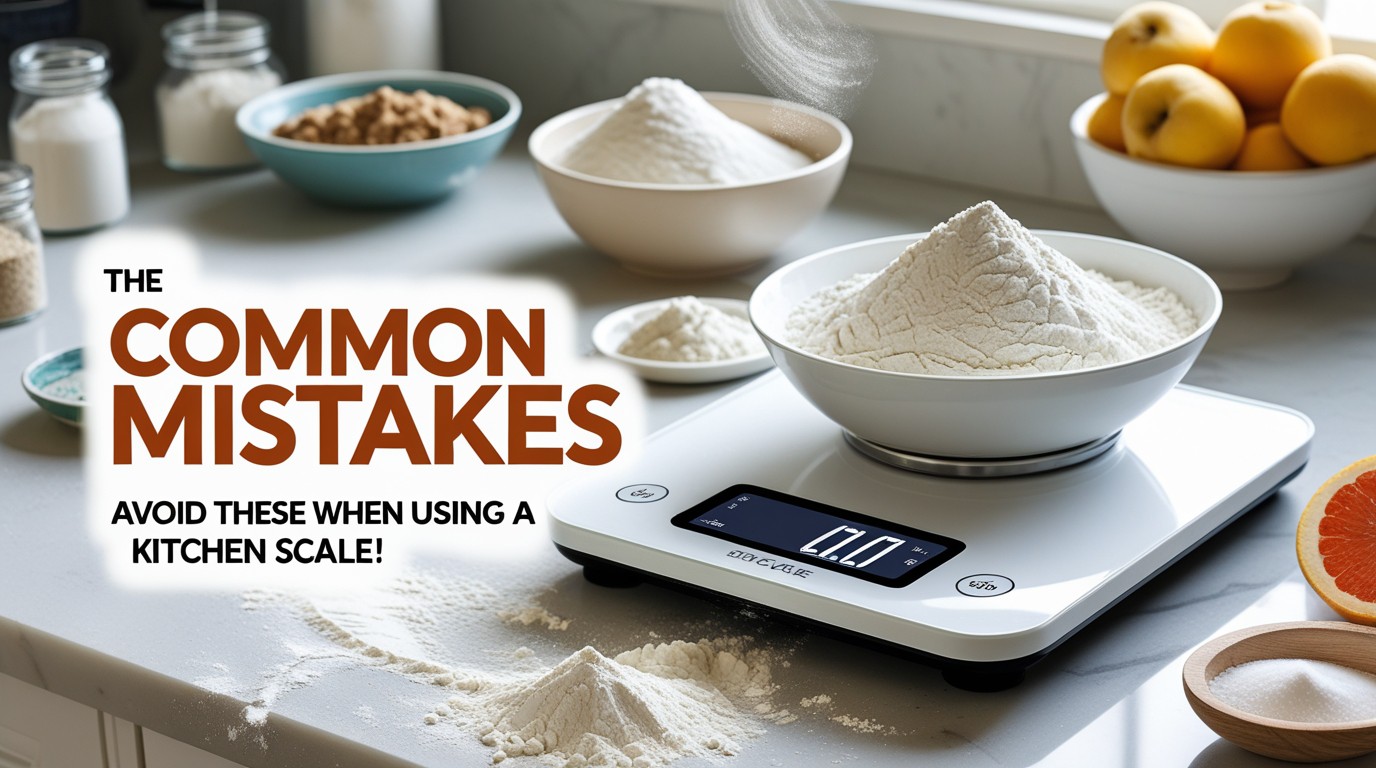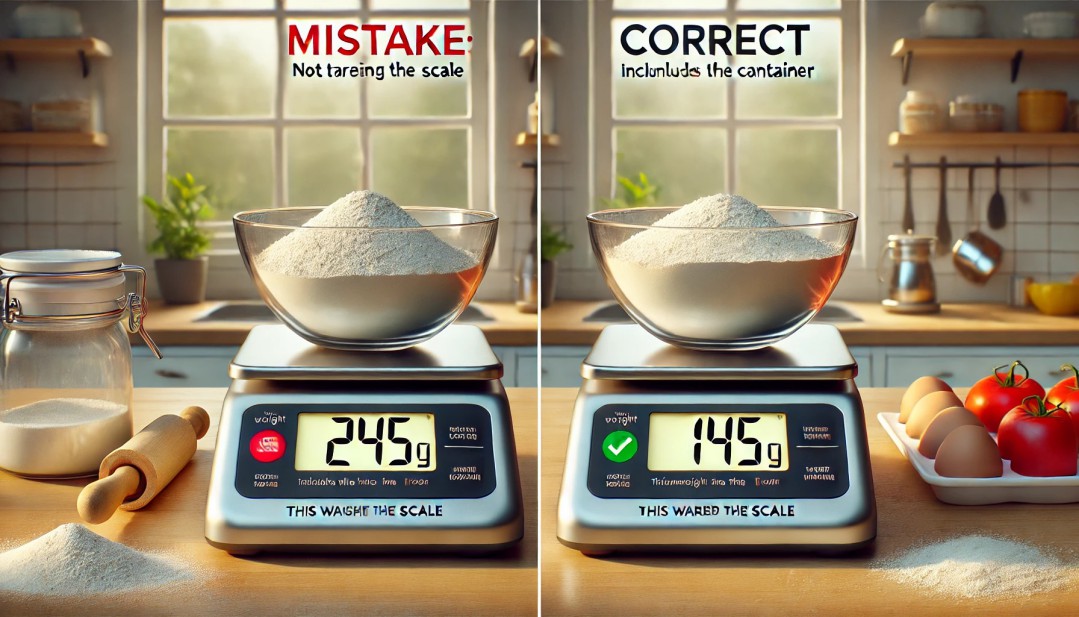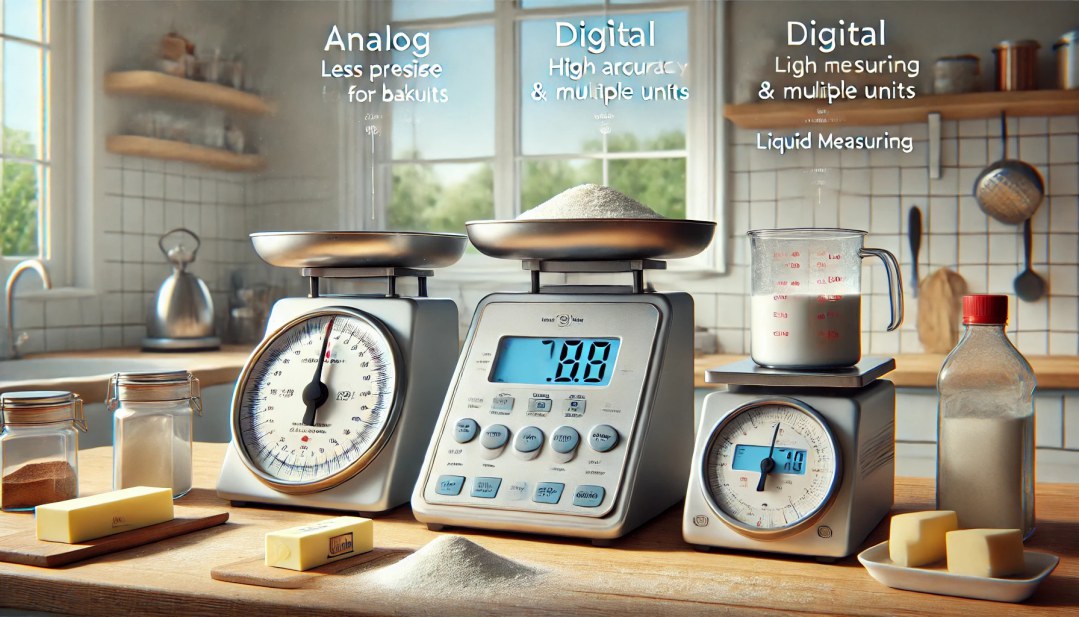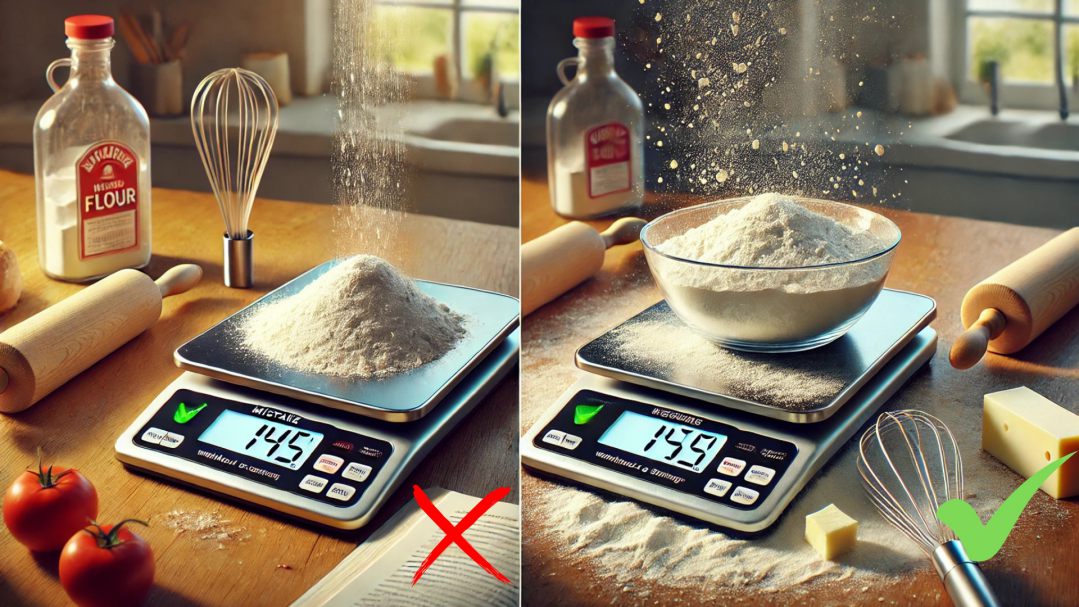
Using a kitchen scale seems straightforward enough—just place your ingredients on the scale, hit a button, and get your measurement, right? However, over the years of using a kitchen scale in my own kitchen, I’ve realized that many people, myself included, make common mistakes that affect the accuracy of their measurements and ultimately impact the quality of their dishes. In this article, I’ll walk you through the five most common mistakes people make when using a kitchen scale and share practical tips for avoiding them.
Mistake 1: Not Taring the Scale Before Weighing
One of the most frequent kitchen scale mistakes I see—both in my own kitchen and in the kitchens of friends—is not taring the scale before weighing ingredients. Taring is the process of setting the scale back to zero after placing a container on it. Without this step, you’re not getting an accurate measurement of just the ingredients inside the container; you’re weighing the container as well.

My Experience with Not Taring the Scale
At first, I didn’t fully understand the importance of taring, so I often used my scale without resetting it. This led to confusion and, sometimes, over-portioning or under-portioning ingredients. For instance, when baking, even a slight difference in flour measurements can change the consistency of dough, resulting in cakes that don’t rise or cookies that spread too much.
How to Avoid This Mistake
Before adding anything to your container, always press the "tare" or "zero" button on your scale. If you're using a bowl to weigh ingredients, simply place the bowl on the scale, reset it to zero, and then add your ingredients. This ensures that the scale is only measuring the ingredients and not the bowl itself. For the most accurate results, always remember to tare your scale, no matter how small the container.
Mistake 2: Not Using the Right Type of Scale for the Task
Another critical mistake I’ve made is choosing the wrong type of scale for certain tasks. While digital scales are the most common and convenient choice, there are different types available, including analog scales and more specialized models like food portion scales or liquid measuring scales. Using the wrong type of scale for your needs can lead to inaccurate readings.

My Experience with Different Types of Scales
I initially started with a basic analog kitchen scale, which I thought would be enough for everything. However, I found it difficult to read precise measurements, especially when baking, where accuracy is key. After switching to a digital scale, I noticed a huge difference. The digital scale provided more precise measurements, and I could easily toggle between different units like grams, ounces, and pounds.
How to Avoid This Mistake
When selecting a kitchen scale, think about what you typically need it for. If you bake frequently, a digital scale with a high level of accuracy is essential. Some scales even have a tare feature that resets to zero automatically when you change ingredients. For liquid ingredients, consider using a scale that offers milliliters as an option. Choosing the right scale will make your cooking experience much easier and more accurate.
Mistake 3: Ignoring Scale Calibration
In my early days of using a kitchen scale, I didn't realize that digital scales can lose their calibration over time, leading to inaccurate measurements. Scale calibration is important for ensuring the scale's readings remain correct. Ignoring this can lead to some frustrating moments, especially when following recipes that require exact measurements.
My Experience with Scale Calibration
There was one instance when I baked a cake and followed the recipe precisely, but it came out flat and dense. After some troubleshooting, I realized my scale had become uncalibrated over time. When I weighed my ingredients, the scale was giving me inaccurate readings. As soon as I recalibrated it, my baking projects returned to normal.
How to Avoid This Mistake
To prevent calibration issues, make sure you follow the manufacturer’s instructions on how to calibrate your scale. Many digital scales have a simple process where you press a button or set the scale to a specific weight (often a known weight like 100g). Regularly checking and recalibrating your scale ensures that you get the most accurate measurements every time. If you suspect your scale is providing inaccurate readings, it’s always worth checking the calibration.
Mistake 4: Weighing Ingredients Without Using a Container or Tray
This mistake often comes up when I’m in a rush. Sometimes, I just toss ingredients directly onto the scale, especially when I don’t feel like dealing with extra dishes. This can lead to a mess and an inaccurate reading if the ingredient spills off the scale or is unevenly distributed. Additionally, using the wrong type of container can throw off measurements.

My Experience with Weighing Without a Container
There have been many times when I’ve weighed flour or sugar directly on the scale without using a container. I found that the ingredients tend to spill over, causing me to lose part of the measured amount, or worse, make a mess all over my countertop. When weighing liquids, this is even trickier as they can easily spill or splash off.
How to Avoid This Mistake
Always use a clean container or tray to weigh ingredients. The container ensures the ingredients stay on the scale, making for a more accurate and less messy experience. For liquids, a container with higher sides or a measuring cup designed for use on scales can help prevent spills. Also, keep in mind that some kitchen scales have specialized trays designed to catch ingredients while weighing them.
Mistake 5: Not Considering the Scale’s Weight Capacity
Not all kitchen scales are created equal, and each model has a weight limit. Many people make the mistake of overloading their scale, assuming it can handle anything. Overloading can not only give you inaccurate readings but can also damage the scale. I learned this the hard way when I tried weighing a large watermelon on my scale, only for it to give me an error message.
My Experience with Overloading the Scale
When I first started using my digital scale, I didn’t check its weight capacity. I attempted to weigh a heavy pot of soup once, which pushed the scale far beyond its maximum weight. The scale malfunctioned, and I had to replace it. I quickly learned to check the specifications of my scale before using it for particularly heavy items.
How to Avoid This Mistake
Before using your scale, check the manufacturer’s specifications for its weight limit. If you need to weigh something heavier than your scale can handle, use a different method, such as weighing smaller portions and then adding them up. This prevents overloading the scale and ensures you’re not risking damage to your device.
Conclusion: Kitchen Scale Best Practices
To avoid these most common mistakes people make when using a kitchen scale, it's essential to develop a consistent routine and follow a few kitchen scale best practices. Always tare the scale, calibrate it regularly, and use the right type of scale for your needs. Taking these simple steps will ensure that you get the most accurate measurements, making your cooking and baking experiences much more enjoyable and successful.
Through trial and error, I’ve learned the value of using a kitchen scale properly, and by avoiding these common kitchen scale errors, you can ensure that your culinary creations turn out just the way you intend them to. Whether you're making a delicate soufflé or a hearty stew, the right technique will always set you up for success.
Leave a Reply